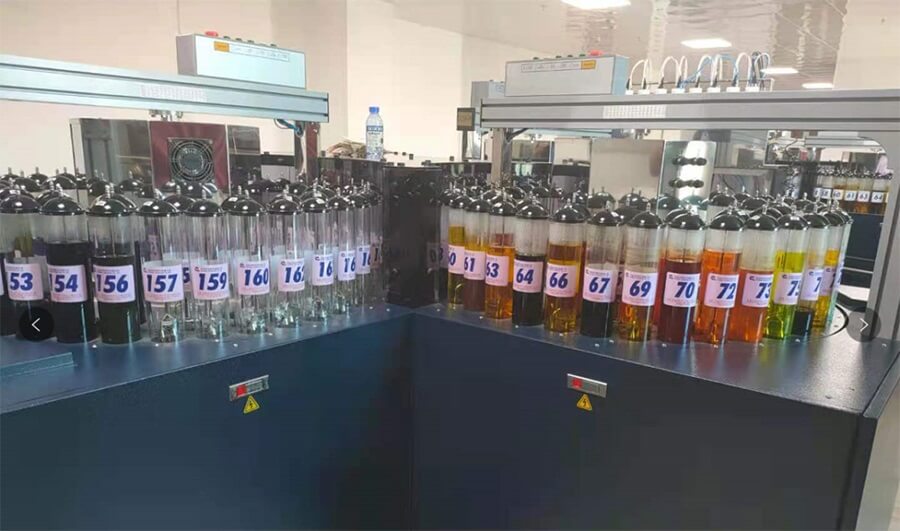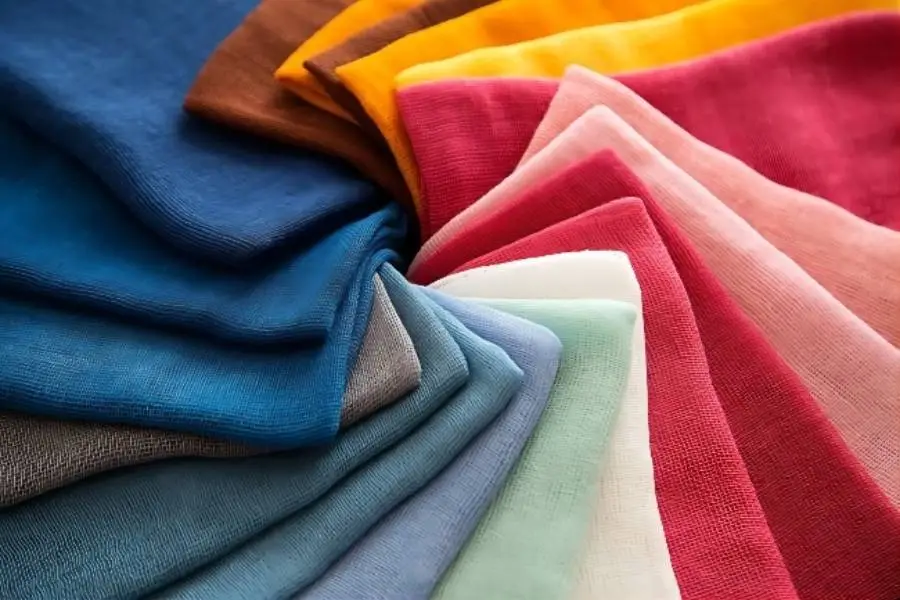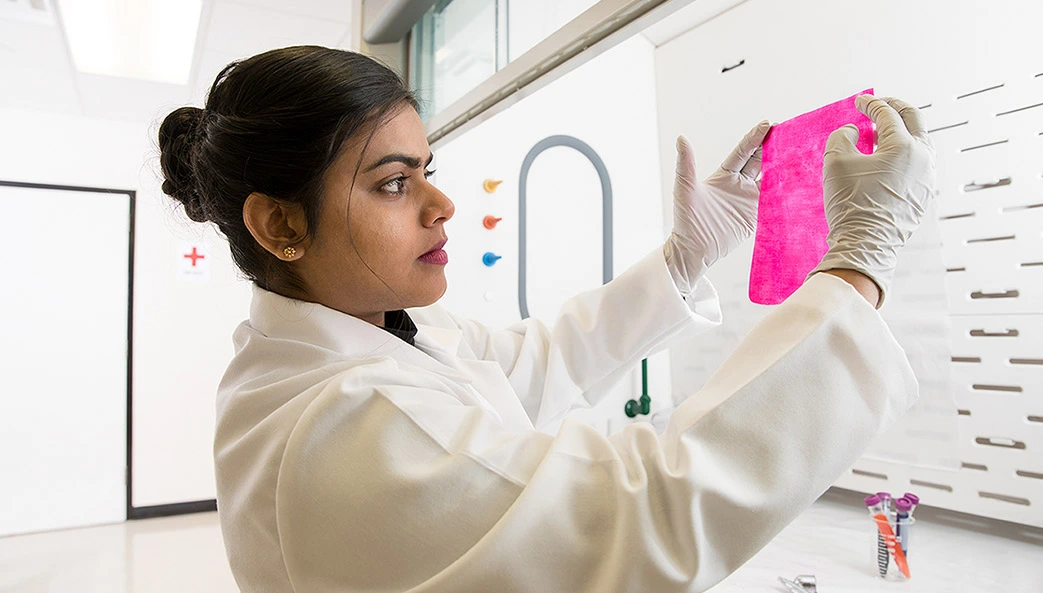Influence of conventional finishing on fabric color Post-finishing is the last process of the…
How does Textile Sample Dyeing Work in the Dyeing Lab?
Table of Contents
What is textile sample dyeing in the dyeing lab?
Based on the colour requirement and design requirement of the incoming sample, design the dyeing process, select the appropriate dyes or paints and dyeing until obtain confirmation. Textile sample dyeing can also be called color matching, usually with a single colour or a combination of colours to achieve the colour requirements.

For example, if a customer sends in a sample, the operator starts to make a sample dyeing. The colour should be the same as the colour of the sample sent in by the customer. However, in order to give the customer a choice, the proofreader will usually send 2 or 3 samples of a similar shade to the customer for confirmation. If the customer confirms a sample, it is ready for mass production, if the customer does not confirm it, a new sample dyeing is required.
Textile sample dyeing is an important preparation before dyeing production. The timing and accuracy of the sample dyeing in the deying lab will directly affect the smooth running of mass production.
Textile sample dyeing process in the dyeing lab
As far as textile materials are concerned, the range of fibres is constantly increasing and blends and composite fibres are used in large numbers. As far as customer requirements are concerned, there is a high degree of colour and light conformity, small colour grade differences, fast proofing and short production lead times. All this places higher demands on textile sample dyeing.
In general, textile sample dyeing is divided into 4 steps: analysis of incoming sample, confirmation of the dyeing recipe, sample dyeing and color matching after dyeing.
1 Analysis of incoming sample
Choose the right combination of dyestuffs according to the fabric composition and specification requirements of the incoming material. The composition of the fabric is directly related to which dyestuff is used? Common relationships are listed in the table below.
| Composition | Dyestuffs |
| Cotton, linen, viscose | Reactive dyes, reduction dyes, sulphide dyes, direct dyes. |
| Wool, silk | Acid dyes, alternatively, reactive dyes, direct dyes. |
| Polyester | Disperse dyestuffs |
| Nylons | Acid dyes, alternatively, reactive dyes, direct dyes or disperse dyes. |
Specification requirements: according to the colour, thread density, yarn thickness, colour fastness requirements, shrinkage rate, moisture absorption and perspiration and other requirements of the fabric, combined with previous dyeing experience, choose the appropriate dyestuff.
2 Confirmation of the dyeing recipe
Based on the colour matching principles and the experience of the operator, the proofers confirm a set of dyeing recipes in advance. In addition, with the development of computer technology, it is now possible to make recipe predictions directly with a computer colour matching system.
It is important to note that computer colour matching systems play an auxiliary role and do not replace manual colour matching. This is because environmental changes, colour variations, material variations etc. may cause the computer colour matching system to be inaccurate.
3 Sample dyeing: dip dyeing and pad dyeing
There are two main dyeing methods for sample dyeing of textiles: dip dyeing and pad dyeing.
Dip dyeing is a dyeing method in which the dyed fabric is impregnated in a dyeing solution and the dye is circulated and spreads and fixes on the fibres through the relative movement of the dyeing solution and the dyed material.
Dip dyeing method is suitable for all forms of textiles and factors such as dyestuff. Factors such as dyestuff, auxiliaries, temperature, concentration, bath ratio and relative movement can affect the uniformity of the dyeing.
The temperature of the dyeing solution and the concentration of the dyestuff and auxiliaries must be uniform in all places, and the temperature of the dyed material must also be uniform in all places, otherwise the dyeing will be uneven, and secondly the bath ratio is too small, which is likely to cause uneven dyeing.
At present, the commonly used sample dip dyeing machine, the IR lab dyeing machine TD130, has obvious advantages over traditional dip dyeing machine and is the first choice for dyeing in the lab.

Advantages of the dip dyeing machine: IR lab dyeing machine TD130
- Automatic reversal of the dyeing cup, even dyeing, no sticking or stringing of colours.
- More precise temperature measurement and control.
- Easy to operate and high working efficiency.
- Stable machine performance, good reproducibility of dyeing results.
- Using special infrared heating method, no pollution to the environment.
- All dyeing cups are made of stainless steel, resistant to salt, acid and alkali, no stagnation of dyestuff.
Pad dyeing is the process of impregnating the fabric in the dye solution for a short period of time (usually a few seconds or tens of seconds) and then rolling it with a roller. After rolling, the dye enters the fabric’s tissues and voids, so that the dye is evenly distributed on the fabric. The dyeing is done later in the process of steaming or baking.
The pad dyeing concentration is expressed in a different way to dip dyeing, it is usually expressed in g/L, i.e. the number of grams (g) of dye contained in 1L of dye solution. Pad dyeing is suitable for continuous mass production and has a high production efficiency, but the dyed fabric is generally under greater tension and is usually used for dyeing woven fabrics, sometimes also for dyeing silk bundles and yarns.

The commonly used pad dyeing machine is the TD122 lab padder.
4 Colour matching of samples
When matching colours, the background of the object being observed, the size and shape of the object, the distance and angle of observation can all cause people to have an illusion of colour. Therefore, the following points need to be noted.
- The light source must be sufficiently bright: an inadequate light source will affect the tonal effect, especially with dark and dull colours.
- The material grain must be in the same direction: if the material grain is in a different direction when color matching, the colour intensity and colour light may be misjudged.
- The background colour must be the same: when color matching, the colour samples should be placed in the centre of the same background colour.
- The light source must be fixed, the distance between the eye and the sample must be fixed, the angle at which the sample is viewed must be fixed and the brightness of the light source must be fixed.
- In addition, after a long period of colour matching, pay attention to the effects of residual images.




This Post Has 0 Comments